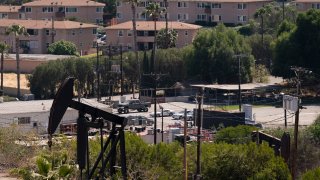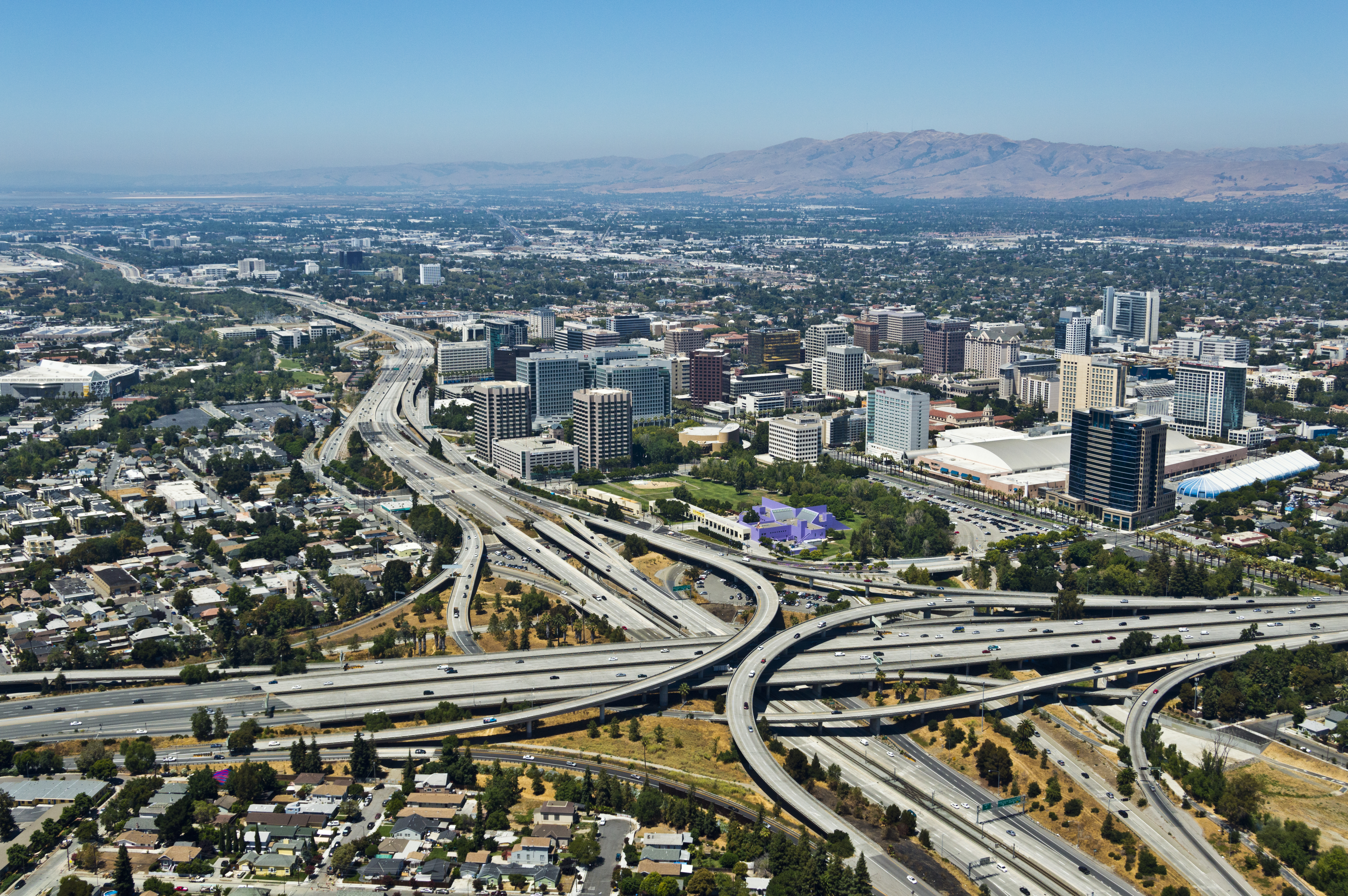
Apartment buildings are seen behind pump jacks operating at the Inglewood Oil Field in Los Angeles, Tuesday, May 18, 2021. California Gov. Gavin Newsom has set some of the nation’s most ambitious goals for weaning his state off oil, including a ban on the sale of new gas-powered cars by 2035 and the end of oil production a decade later.
California Gov. Gavin Newsom has set some of the nation's most ambitious goals for weaning his state off oil, including a ban on the sale of new gas-powered cars by 2035 and the end of oil production a decade later.
But in the near term it's a rulemaking process in one of his agencies that environmentalists are most anxiously awaiting. They say it will show the freshman Democrat's true commitment to meaningful action during his governorship.
At issue is whether California should impose a buffer zone between oil drilling sites and homes, schools and hospitals. Despite its reputation as a climate leader, California has no statewide limit, unlike other oil producing states including Pennsylvania and Colorado. Even Texas bans wells within 467 feet (142 meters) of a property line.
California environmentalists want a 2,500-foot (762-meter) space, which would be the largest of any state. They point to studies that show living near an active drilling sites can elevate risk for birth defects, cancer, respiratory problems and other health issues. That's in addition to loud sounds and foul smells. It’s not clear how far the agency will go and whether any rules would apply to new drilling, existing wells or both.
The agency's direction holds political implications for Newsom as he faces an expected recall election in the fall. Unions typically friendly with Newsom that represent workers are aligned with the powerful oil industry, which says a statewide rule on so-called setbacks would cost jobs and raise fuel prices.
That leaves Newsom stuck between two important Democratic voting blocs — labor and environmentalists — whose support he needs this year and, if he survives, in his 2022 reelection bid.
“How he moves is going to motivate and encourage voters or discourage them," said Gladys Limon, executive director of the California Environmental Justice Alliance. “It will set the direction in which communities will move in for the next election."
Local
In 2019, Newsom's first year as governor, he changed the name and focus of California's oil and gas agency. The Division of Oil, Gas and Geothermal Resources is now the Geologic Energy Management Division, or CalGEM, and Newsom made health and safety a part of its mission. He specifically told the agency to consider prohibiting oil and gas activities near homes, schools, hospitals and parks.
Eighteen months later, regulators are still deliberating, and last year they approved nearly 300 new oil and gas permits within 2,500 feet of homes, schools and health care facilities, according to Earthjustice, an environmental law group. Regulators delayed a planned release of the draft rules in December and now say they'll come this spring, though no date has been set. Even then, the rules won't be final, though they will signal the direction Newsom's administration wants to move.
Get a weekly recap of the latest San Francisco Bay Area housing news. Sign up for NBC Bay Area’s Housing Deconstructed newsletter.
Oil has long posed a political conundrum for ruling Democrats in California, the seventh-largest oil producing state. Former Gov. Jerry Brown, hailed internationally as a climate champion, faced pushback at home for not taking on the industry more aggressively. In the Legislature, efforts to establish setbacks have repeatedly failed.
The Western States Petroleum Association opposes a statewide mandate, saying such rules should be decided at the local level and based on health and environmental concerns specific to the area. It has an ally in the State Building and Construction Trades Council, a major union.
“A one-size-fits-all approach like that we think would be bad public policy and almost by definition it doesn’t take into account the science, data and what is really happening on the ground in a particular location," said Kevin Slagle, WSPA's vice president of strategic communications.
He pointed to the group's support for a Kern County process that requires every drilling project be evaluated for setback needs.
An estimated 2 million Californians live within 2,500 feet of an active oil well, according to Voices in Solidarity Against Oil in Neighborhoods. Most active wells are in Los Angeles and Kern counties.
“They can’t wait decades to get the oil wells out of their backyard,” said Ann Alexander, a litigator for the Natural Resources Defense Council.
If Newsom doesn't go far enough, some environmentalists could rethink their political support. Earlier this spring, some discussed supporting an alterative recall candidate said RL Miller, the former head of the California Democratic Party’s environmental caucus. That was before Newsom announced a 2024 ban on fracking — the process of extracting oil and gas embedded in rock deep underground — and called on state regulators to explore an end to oil production by 2045. She supports Newsom, and many climate groups have endorsed him, if only because they see no viable alternative.
Meanwhile, the unions representing workers who rely on jobs related to the oil industry say a mandated buffer zone would risk good-paying jobs and raise the price of fuel.
The State Building and Construction Trades Council, a powerful force in Sacramento, represents about 100,000 people with industry-related jobs including laying pipes and electrical and iron work, said President Robbie Hunter.
WSPA spent more than $1.3 million lobbying at the state Capitol in the first three months of the year. The state Building and Construction Trades Council spent $87,000. Meanwhile, the Natural Resources Defense Council spent $59,000, and the California Environmental Justice Alliance spent $13,500, according to state campaign finance filings.
The building trades union opposes the recall, Hunter said. But that won't stop his members from pushing Newsom and his administration to see their point of view. He charged environmentalists with holding “extreme opinions."
For now, no prominent Democrats are challenging Newsom, but that could change if he appears more at risk as the election nears.
He is not directly involved in writing the regulations. The oil regulator is working with 15 public health experts and has taken more than 40,000 comments to inform its decision. But Newsom is ultimately in control of the agency's direction, noted Danny Cullenward, an energy economist and lawyer who studies carbon emissions.
“The ball really is in the governor’s court right now,” he said.
___
Associated Press reporter Adam Beam contributed to this story.



